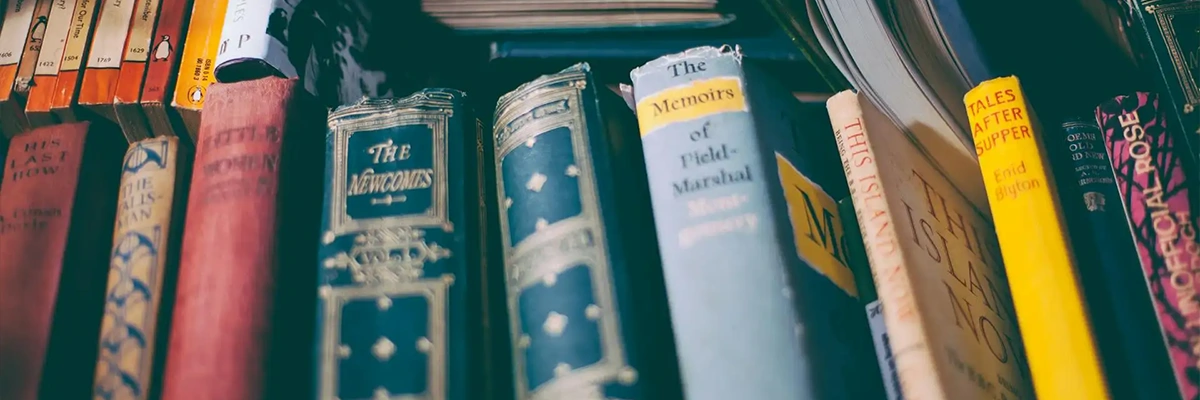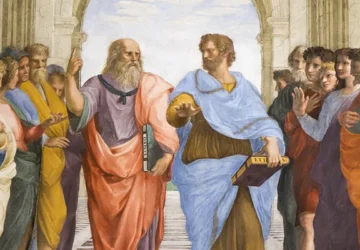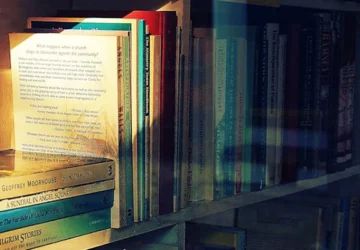
Top Modern Novels Worth Reading
What makes a novel “modern”?
The word itself is a trap. Does “modern” mean new? Does it mean it was written in our lifetime? Or does it refer to a specific, explosive period in art (capital ‘M’ Modernism) that shattered every rule it could find?
We believe it’s all three.
The “modern novel” isn’t just a timeline; it’s a sensibility. It’s a reaction to a fractured, accelerated world. It’s a shift in focus from “What happened?” to “How did it feel?” This is a contemporary literature review, but it’s also a map of the last 100 years of human consciousness.
We’re not interested in simple beach reads or fleeting bestsellers. We’re interested in the books that built the scaffolding we all live in. The books that are difficult, dangerous, beautiful, and essential. The best modern fiction isn’t always easy, but it’s always worth it.
Here are eight must-read modern books that define the journey from the 20th century to today.
“Ulysses” by James Joyce (1922)

- Author: James Joyce
- Publication Date: 1922
- Genre: Modernist Epic, Stream of Consciousness
- The entire 265,000-word novel takes place on a single day: June 16, 1904 (now celebrated as “Bloomsday”)
- It was banned for obscenity in the United States until the landmark 1933 court case United States v. One Book Called Ulysses.
Let’s get the giant out of the way first. “Ulysses” is not just a book; it’s an event. A monument. An explosion.
It tracks that single day in the lives of Leopold Bloom, Stephen Dedalus, and Molly Bloom in Dublin. That’s the plot. But the plot is the least important part. Joyce’s true subject is consciousness itself, in all its messy, contradictory glory. He aims to capture the total experience of being a person.
He does this using a revolutionary technique called “stream of consciousness.” Joyce dives headfirst into the unfiltered soup of the human mind. He parallels Homer’s “Odyssey,” but his epic journey isn’t across the sea; it’s through the grocery store, the pub, the funeral, and the internal monologue of a flawed, decent man thinking about kidneys, adultery, and the nature of parallax.
It’s famous for being difficult. It is. Joyce assaults you with puzzles, obscure references, and a completely different writing style for every chapter. One chapter is a play. One is a catechism. Another mimics the entire history of English prose. The final chapter, Molly Bloom’s soliloquy, is a single, unpunctuated 40-page sentence of raw, internal thought.
But that difficulty is the point. Joyce is arguing that the modern self is not simple or linear. It’s a chaotic chorus of memory, desire, anxiety, and observation, all happening at once.
“History, Stephen said, is a nightmare from which I am trying to awake.”
Why It’s Worth It: You don’t read “Ulysses” to find out what happens. You read it to experience the mechanics of thought. You read it to see how the novel form could be stretched to contain the totality of life, down to the most mundane bodily function. It declared the 19th-century novel obsolete.
“The Great Gatsby” by F. Scott Fitzgerald (1925)

- Author: F. Scott Fitzgerald
- Publication Date: 1925
- Genre: Modernist Novel, Tragedy
- The novel was a commercial disappointment upon its release, selling fewer than 20,000 copies in its first year
- The iconic cover art of the “Celestial Eyes” was designed before Fitzgerald finished the novel, and he reportedly told his publisher he had “written it into” the book
If “Ulysses” is a dense, sprawling internal epic, “The Great Gatsby” is a perfectly cut diamond. It’s short, sharp, and devastatingly beautiful. It’s a novel of profound economy.
On the surface, it’s a story about the Jazz Age, lavish parties, and a mysterious millionaire obsessed with the past. But beneath that glitter, it’s the definitive autopsy of the American Dream. It’s a novel about the hollowness of wealth and the danger of living in a fantasy.
Fitzgerald’s prose is what sets this book apart. It’s almost painfully beautiful, lyrical and precise in a way that few writers ever achieve. Every sentence is crafted. The story is told through the eyes of Nick Carraway, a narrator who is both enchanted and repulsed by the staggering wealth and moral emptiness he witnesses. His status as an “insider-outsider” makes him the perfect, if not entirely reliable, witness.
The novel is a masterclass in symbolism. The green light represents an unreachable past. The eyes of Doctor T. J. Eckleburg gaze over the “Valley of Ashes,” a wasteland of industrial dumping that sits between the rich suburbs and the city. It’s a symbol of a dead, judgmental God in a godless world.
Gatsby himself is a tragic figure, a man who built an empire on a fantasy. He believed he could repeat the past. He was wrong.
“So we beat on, boats against the current, borne back ceaselessly into the past.”
Why It’s Worth It: This is perhaps the “Great American Novel.” It’s compact, endlessly re-readable, and it captures a specific moment in time while being, ultimately, timeless. It proves that a critique of society doesn’t have to be a boring lecture; it can be a beautiful, heartbreaking poem. It hurts.
“To the Lighthouse” by Virginia Woolf (1927)

- Author: Virginia Woolf
- Publication Date: 1927
- Genre: Modernist Novel, Stream of Consciousness
- The novel is highly autobiographical; the characters of Mr. and Mrs. Ramsay are well-known stand-ins for Woolf’s own parents
- The radically experimental middle section, “Time Passes,” covers a span of ten years (including World War I) in just 20 abstract pages
Alongside Joyce, Virginia Woolf is the other great pillar of Modernist stream of consciousness. But where Joyce’s style is explosive, encyclopedic, and often male-focused, Woolf’s is intimate, poetic, and fluid. She is concerned with the internal lives of women and the nature of perception.
“To the Lighthouse” is a novel where almost nothing “happens.” A family, the Ramsays, vacations at their summer home with a group of friends. They plan to visit a nearby lighthouse.
That’s it.
The book is split into three sections. The first, “The Window,” details an afternoon and evening through the flowing thoughts of various characters, especially the matriarch Mrs. Ramsay. The second, “Time Passes,” is a shocking, abstract interlude where years fly by. The house decays, the Great War happens (mentioned only in cold parentheses), and characters die off-stage. The third, “The Lighthouse,” sees the surviving characters return to the house years later and finally make the trip.
Woolf’s genius is her ability to move seamlessly between the minds of her characters, capturing the small jealousies, the profound philosophical thoughts, and the unspoken affections that ripple through a group of people. The novel explores the vast differences between male and female perception, symbolized by the “subjective” Mrs. Ramsay and the “objective” Mr. Ramsay.
“What is the meaning of life? That was all; a simple question; one that tended to close in on one with years. The great revelation had never come. The great revelation perhaps never did come. Instead there were little daily miracles, illuminations, matches struck unexpectedly in the dark.”
Why It’s Worth It: This book teaches you how to perceive the world differently. It proves that a person’s internal world is as vast and dramatic as any external war. It’s a novel about loss, memory, and the struggle to create meaning (represented by the artist Lily Briscoe) in a world of chaos.
“The Sound and the Fury” by William Faulkner (1929)

- Author: William Faulkner
- Publication Date: 1929
- Genre: Modernist Novel, Southern Gothic
- The novel’s title comes from Shakespeare’s “Macbeth”: “[Life] is a tale / Told by an idiot, full of sound and fury, / Signifying nothing”
- Faulkner said the entire novel began as a single “mental picture” of a young girl’s muddy underwear as she climbed a tree, and the book was his attempt to explain why she was there
If the Modernists had one obsession, it was time. Joyce played with it, Woolf stretched it, and William Faulkner shattered it. “The Sound and the Fury” is the story of the Compson family, a decaying Southern aristocracy in Mississippi.
It is a tragedy told in four distinct sections, and it is famously disorienting.
The first section is narrated by Benjy, a 33-year-old man with severe cognitive disabilities. He cannot understand time. His section is a jumble of sense-memories, where the smell of trees or the word “caddy” (which he associates with his sister, Caddy) sends him tumbling back and forth through three decades. It’s heartbreaking and utterly brilliant.
The next sections are told by his tortured, intellectual brother Quentin Compson (obsessed with the past and his sister’s honor); his cynical, cruel brother Jason; and finally, an objective third-person narrator focusing on their black servant, Dilsey, who is the only source of order in the chaos.
It’s a novel about decay. The decay of a family, of an ideology, and of sanity itself. The sister, Caddy, is the novel’s core, yet she is never given her own voice. She is only seen through the warped perceptions of her brothers. Faulkner uses this fragmented structure to show how the past isn’t even past. It’s a constant, living burden.
“Clocks slay time… time is dead as long as it is being clicked off by little wheels; only when the clock stops does time come to life.”
Why It’s Worth It: This is a challenge. The first 50 pages are a wall of confusion, but once you break through, the emotional power is overwhelming. It’s a tragedy of Shakespearean proportions, written in a purely 20th-century voice. It redefined what narrative structure could do.
“Nineteen Eighty-Four” by George Orwell (1949)

- Author: George Orwell (pen name of Eric Arthur Blair)
- Publication Date: 1949
- Genre: Dystopian Fiction, Political Satire
- Orwell wrote the book while critically ill with tuberculosis on the remote Scottish island of Jura, finishing it just months before his death
- The original working title was “The Last Man in Europe,” but his publisher pushed for “Nineteen Eighty-Four” for better marketability
We now move from high Modernism to the post-war era. “Nineteen Eighty-Four” isn’t a book you read. It’s a book you absorb into your DNA.
George Orwell’s masterpiece is so potent that its language has become our language. Big Brother. Thoughtcrime. Doublethink. Newspeak. Room 101.
This is more than a novel; it’s a political warning. It’s a terrifyingly clear-eyed look at a totalitarian state (Oceania) that controls its citizens not just through force, but by controlling language, history, and reality itself. The goal of the Party is not just obedience, but the complete eradication of individual thought.
The story follows Winston Smith, a low-ranking party member who dares to think a forbidden thought. He starts an illegal diary and begins a secret love affair, two acts of rebellion that are doomed from the start.
What makes the book truly terrifying isn’t the violence. It’s the psychological manipulation. The core of the Party’s power is “Newspeak,” a new version of English designed to make “thoughtcrime” (thinking a rebellious thought) literally impossible by removing the words for concepts like freedom or rebellion. It’s the chilling idea that reality is whatever the Party says it is.
“War is peace. Freedom is slavery. Ignorance is strength.”
Why It’s Worth It: In an age of disinformation, “alternative facts,” and mass surveillance, “1984” is no longer a dystopian fantasy. It is a user manual for the world we live in. It’s one of the few modern novels worth reading that feels more relevant every single year.
“Lolita” by Vladimir Nabokov (1955)

- Author: Vladimir Nabokov
- Publication Date: 1955 (in Paris, France)
- Genre: Postmodern Novel, Transgressive Fiction
- Due to its subject matter, the novel was rejected by all major US publishers and was first published by Olympia Press in Paris, a publisher known for erotic literature
- Nabokov, a synesthete and lepidopterist (butterfly expert), wrote the entire novel on index cards while traveling across the US on butterfly-hunting expeditions
This is the most dangerous book on the list. “Lolita” is a masterpiece, and it is a profoundly disturbing one.
It is the “confession” of Humbert Humbert, a charming, brilliant, and monstrous pedophile, detailing his cross-country obsession with a 12-year-old girl, Dolores Haze (his “Lolita”).
The book’s controversy is obvious. Its genius, however, is linguistic.
Nabokov, a Russian aristocrat writing in his adopted language (English), performs linguistic acrobatics that are simply breathtaking. The prose is lush, witty, allusive, full of puns and wordplay, and intoxicatingly beautiful.
And that is the trap.
Humbert Humbert is the ultimate unreliable narrator. He uses his gorgeous, seductive language to make you, the reader, complicit in his crime. He wants you to sympathize with him, to see his monstrousness as a tragic romance. The book is a moral battleground, forcing you to fight against the very prose you are admiring. He isn’t just a monster; he is a monster with a poet’s soul, which makes him infinitely more terrifying.
The novel is also a brilliant satire of 1950s American culture, seen through the eyes of a cynical European intellectual. The motels, the diners, the pop culture it’s all there, captured perfectly.
“Lolita, light of my life, fire of my loins. My sin, my soul. Lo-lee-ta: the tip of the tongue taking a trip of three steps down the palate to tap, at three, on the teeth. Lo. Lee. Ta.”
Why It’s Worth It: “Lolita” is a harrowing exploration of art, obsession, and solipsism (the belief that only one’s own mind is sure to exist). It proves that style is substance and that language can be both a tool of profound beauty and a weapon of horrific self-deception. It will change the way you think about narration forever.
“One Hundred Years of Solitude” by Gabriel García Márquez (1967)

- Author: Gabriel García Márquez
- Publication Date: 1967 (Spanish), 1970 (English)
- Genre: Magical Realism, Epic
- The novel’s opening line (“Many years later, as he faced the firing squad, Colonel Aureliano Buendía was to remember…”) is considered one of the most iconic and influential opening sentences in modern literature
- García Márquez wrote the book in 18 months of intense isolation, claiming he had a complete vision of the novel while driving to Acapulco
This is the book that introduced the world to Magical Realism and secured García Márquez the Nobel Prize.
It is an epic, sprawling, multi-generational saga of the Buendía family, founders of the mythical town of Macondo. In Macondo, the impossible happens every day. A priest levitates when he drinks hot chocolate, a woman ascends to heaven while folding laundry, and a plague of insomnia sweeps the town.
But these “magical” events are not treated as fantasy. They are described in the same deadpan, journalistic tone as the civil wars, the romances, and the banana plantation massacre that also define the family’s history. This blending of the fantastic and the real is the heart of Magical Realism.
The novel is a lush, cyclical, and overwhelming experience. Characters are all named Aureliano or José Arcadio, blending into one another as history repeats itself. The Aurelianos are intellectual and reclusive; the José Arcadios are impulsive and strong. This repetition suggests that time is not linear but a circle, and that the family (and perhaps all of Latin America) is trapped in a cycle of its own making.
It is a novel about time, memory, and the incredible, doomed vibrancy of a continent haunted by its own past.
“Instead of going to the chestnut tree, he went to the kitchen and unearthed a small copper pot that had been buried for more than twenty years, and with the astuteness of a cat he appeared on the porch… ‘The world is round, like an orange.’”
Why It’s Worth It: Reading this book feels like waking up from a 300-page dream. It’s a complete sensory overload that rewires your brain. It shows you a new way for literature to capture the soul of an entire continent, blending myth with painful political reality.
“Never Let Me Go” by Kazuo Ishiguro (2005)

- Author: Kazuo Ishiguro
- Publication Date: 2005
- Genre: Dystopian Fiction, Science Fiction, Coming-of-Age
- Ishiguro wrote the first draft in only four weeks, and the novel was named Time magazine’s best novel of 2005
- The novel’s core premise is a massive secret, deliberately withheld from the reader for the first third of the book to create a slow-burn mystery and a devastating reveal
We end with a contemporary master. “Never Let Me Go” is a quiet book. It’s gentle, restrained, and absolutely devastating.
The story is told by Kathy H., who recalls her idyllic childhood at a special English boarding school called Hailsham. She and her friends, Ruth and Tommy, grew up in a protected world, taught that they were special and that their health was paramount.
But there is a dark, terrible secret at the heart of Hailsham.
To say more would be to spoil one of the most powerful reveals in modern literature. Ishiguro’s genius is in his tone. The prose is simple, almost plain. Kathy’s narration is full of understatement. The characters never rage against their fate. They accept it with a quiet, heartbreaking passivity.
The book is technically science fiction, but it has no spacesHips or aliens. It’s a profound ethical dilemma. It’s a book about what it means to be human, to have a soul, and to accept a fate you never asked for. The title itself refers to a song that Kathy loves, which she interprets as a mother holding onto her child. It becomes a metaphor for holding onto their own brief, fragile lives.
“It was like walking past a mirror you’ve walked past every day of your life, and suddenly it shows you something else. Something troubling and strange.”
Why It’s Worth It: This is the gut punch you never see coming. While the other books on this list shout, “Never Let Me Go” whispers. And its whisper is louder than any scream. It is a heartbreaking, unforgettable masterpiece that asks what we are willing to sacrifice for our own comfort.
The Thread That Binds Them
From Joyce’s shattered mirrors of consciousness to Ishiguro’s quiet resignation, these Top Modern Novels are not just stories. They are tools.
They are devices for understanding a world that no longer makes sense on its own. They ask the hard questions: What is time? What is memory? What is the self? What is the cost of our dreams?
They don’t offer easy answers. They offer us the company of genius.
These books demand your attention, and they will repay it a thousand times over.
Recommended for you

Philosophy Books That Change Worldviews
Some books are entertainment. Some are information. A very small few are dynamite. They don’t just add to what you know; they change how you know it. They are philosophy books that change worldviews by locating the hidden assumptions you live your life by the very foundations of your “common sense” and putting a metaphorical […]

How to Take Notes from Books and Lectures
Look at a typical student’s notebook after a lecture. What you will likely see is a dense, frantic wall of text. The student has spent 50 minutes in a desperate sprint, trying to act as a human stenographer, to capture every word the professor said. They leave the lecture exhausted, with cramped hands and a […]

Best Biographies of Influential Figures
What makes a biography “great”? The simple answer is “accuracy.” A good biography, we assume, is one that gets all the facts right. It has the correct dates, the verified quotes, the detailed footnotes. This answer is true, but it is incomplete. It is the answer for a historian, not a reader. A simple collection […]

How to Read Academic Literature Effectively
Reading an academic journal article is not like reading a novel. It is not like reading a blog post. It is a completely different activity. A novel invites you in. A blog post gives you its point quickly. An academic paper, by contrast, is a fortress. It is dense, written in a specialized code, and […]

How to Become More Productive: Step-by-Step Guide
In one afternoon, a small team can draft a long-form article, auto-generate matching social graphics, and cut a 60‑second explainer video—without touching traditional timelines or hiring a studio. The shift isn’t hype: AI tools now turn plain text into publish-ready visuals, videos, and SEO-optimized pages, compressing days of manual work into hours. If your goal […]

Preparing for Exams Using Books and Study Guides
It is the most dreaded and familiar ritual in academic life. It is 1 a.m. The exam is in eight hours. You are surrounded by a wall of open textbooks, and your eyes are scanning a highlighted page for the tenth time. You recognize the words. They feel familiar, like an old song. But when […]

Molecular Biology and the Books That Defined It
What is life? For millennia, this question was the domain of priests, philosophers, and poets. It was a question of “spirit,” of a “vital spark,” of a “ghost in the machine.” Then, in the middle of the 20th century, a new group of thinkers took over. They were physicists, chemists, and biologists, and they approached […]

What Hobby to Start: Finding Joy in Your Free Time
You don’t need a makeover to feel more alive—you need a habit you look forward to. Two hours a week sketching city corners, a dawn loop around the park, or a Sunday bake that feeds three lunches can shift your mood, your energy, and your calendar. The question behind “What Hobby to Start: Finding Joy […]